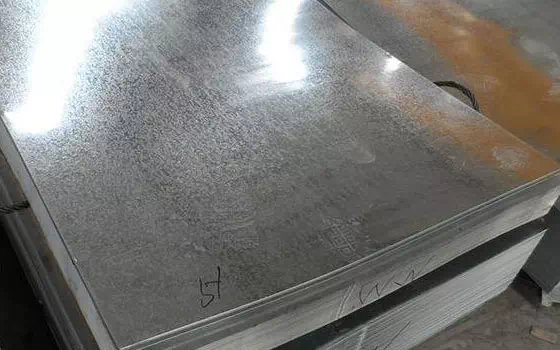Welcome to Zhishang Steel Co., Ltd.
TEL: (Gavin) +86-15665898999 | Email : info@zhishangsteel.com

Welding process of galvanized steel
(1) Manual arc welding
1) Preparation before welding
In order to reduce welding smoke and prevent welding cracks and pores, in addition to opening the appropriate groove before welding, the zinc layer near the groove should be removed. The removal method can be flame baking or sand blasting. The groove clearance should be controlled within 1.5 ~ 2mm as far as possible, and when the workpiece thickness is large, it can be relaxed to 2.5 ~ 3mm.
2) Selection of electrode
The selection principle of the welding rod is that the mechanical properties of the weld metal are as close as possible to the base metal, and the silicon content of the welding rod deposited metal should be controlled below 0.2%.
The joint strength obtained by using ilmenite type electrode, titanium oxide type electrode, cellulose type electrode, titanium calcium type electrode and low hydrogen type electrode can reach satisfactory indicators, but the welding seam with low hydrogen type electrode and cellulose type electrode is prone to slag inclusion and porosity, so it is generally not used.
For low carbon steel galvanized steel, J421/J422 or J423 electrode should be preferred. For galvanized steel plates with strength levels above 500MPa, E5001, E5003 and other types of welding rods can be selected. For galvanized steel plates with a strength above 600MPa, E6013, E5503 and E5513 welding rods should be selected.
When welding, try to use short arc, do not make the arc swing, in order to prevent the expansion of the melting area of the galvanized layer, to ensure the corrosion resistance of the workpiece and reduce the amount of smoke.
(2) gas arc welding
CO2 gas shielded welding or Ar+CO2, Ar+O2 and other mixed gas shielded welding can be used for welding. The protective gas has a significant effect on the content of Zn in the weld. When pure CO2 or CO2+O2 is used, the content of Zn in the weld is higher, while when Ar+CO2 or Ar+O2 is used, the content of Zn in the weld is lower. The current has little effect on the Zn content in the weld, and the Zn content in the weld decreases slightly with the increase of the welding current.
When welding galvanized steel with gas shielded welding, welding dust is much larger than manual arc welding, so special attention should be paid to exhaust air. The main factors affecting the amount and composition of soot are current and protective gas. The greater the current, or the greater the CO2 or O2 content in the protective gas, the greater the welding smoke, and the ZnO content in the smoke also increases, and the maximum ZnO content can reach about 70%.
Under the same welding specification, the penetration depth of galvanized steel is larger than that of non-galvanized steel. The porosity sensitivity of T-shaped joints, lap joints and downward vertical welding is higher, and the higher the welding speed, the easier the porosity is. For galvanized alloy steel, the effect of welding speed is particularly obvious. In multi-pass welding, the porosity sensitivity of the subsequent pass is greater than that of the previous pass.
The mechanical properties of galvanized steel joints welded with different protective gases are shown in Table 2. It can be seen that the protective gas composition does not have a great impact on the mechanical properties of the joint, and pure CO2 is generally used for welding.

Zhishang Steel has always been a pioneer in custom steel and special supplies, and has been recognized for its efforts in enhancing work efficiency and product quality. In addition to ISO9001:2015 certification, we also adhere to strict quality policies and proprietary procedures. If you have any questions, please contact us to provide the best type of product solution for your pre-painted, coil coating metal process, we will closely support after-sales service to ensure that your subsequent problems can be solved in a timely manner, if you have any questions, please send email to info@zhishangsteel.com, we look forward to serving you.

Zhishang Steel, specializing in domestic steel products trade, warehousing, processing and other services. The team has four service teams: Shandong Zhishang Steel Co., LTD., Shandong Zhiyiheng Trading Co., LTD., Tai 'an Zhishang Economic and Trade Co., LTD., Shandong Zhishang Steel Structure Co., LTD. Mainly engaged in steel coil, coated, stee···